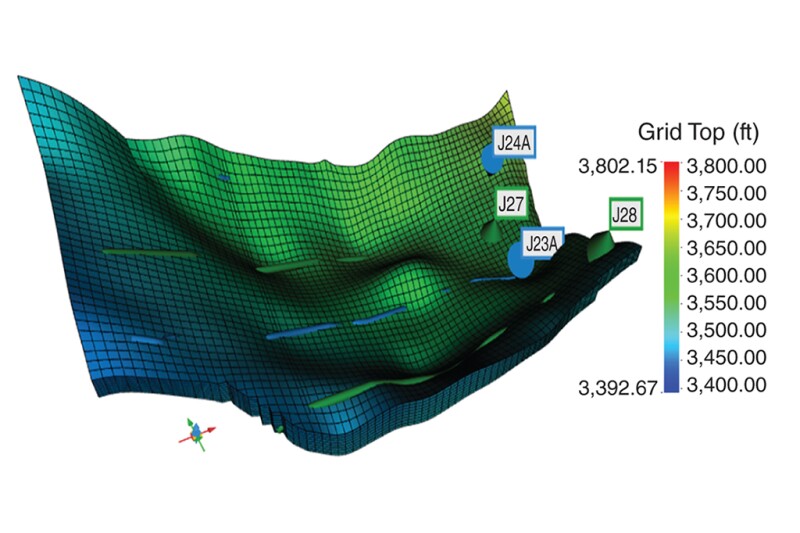The complete paper discusses the first polymerflooding pilot to enhance heavy oil recovery on the Alaskan North Slope. After more than 2.5 years of polymer injection, significant benefit has been observed from the decrease in water cut, from 65% to less than 15% in project producers. The primary objective of the study was to develop a robust history-matched reservoir simulation model capable of predicting future polymerflooding performance.
Pilot Description
The pilot program targets an isolated fault block in the Schrader Bluff NB sands with two horizontal injectors (J-23A and J-24A) and two horizontal producers (J-27 and J-28). The producing lengths of the horizontal wells range from 4,200 to 5,500 ft, and the average interwell distance is approximately 1,100 ft. The project wells were put on waterflooding in June 2016, recovering approximately 7.6% of the original oil in place with a cumulative water injection of 0.09 pore volumes (PV). In August 2018, polymer solution injection commenced.


